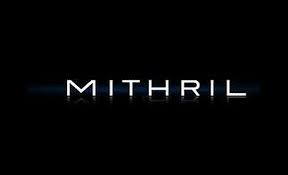 On Tuesday, StrictlyVC took readers inside 22-month-old Mithril Capital Management, a well-known but little-understood investment firm cofounded by longtime friends and colleagues Peter Thiel and Ajay Royan.
On Tuesday, StrictlyVC took readers inside 22-month-old Mithril Capital Management, a well-known but little-understood investment firm cofounded by longtime friends and colleagues Peter Thiel and Ajay Royan.
As we’d sat down with Royan for more than an hour at Mithril’s San Francisco offices, we had some additional notes from our chat we thought you might find interesting. They’ve been edited for length.
You worked with Peter at his hedge fund, Clarium Capital Management, as well as at Mithril. What makes your partnership work?
We’ve worked together so long that he’s a fantastic foil to my thinking. And after all these years, if Peter is excited about something and I think differently, he’s very open to good feedback. So we have good discussions [and] independent views and there’s enough shared experience and shared principles that we can have a quick, high-resolution conversation about things in depth.
Mithril has made seven investments to date, most of them eight-figure investments, including in a San Francisco-based security software company called Lookout. Do you take board seats with these investments?
It’s at the request of the company. My view is [you want to offer] high availability and low interference. You want the check writing to be the most dramatic thing that you do, which is contra to what you hear in the Valley these days. You should be very helpful — and we are, whenever we’re asked, including with sophisticated financial strategy. But companies are staying private longer these days, so they’re encountering operational issues and capital management issues that venture-backed companies didn’t encounter 10 years ago, and that’s where we’re most helpful. But that is not formal governance; that’s really about a good relationship with founders.
You’ve said that with Mithril’s first, current fund, you ended up with a more standard fund structure, though you really wanted to form a corporation. Will you pursue a different structure the next time around?
No, [what we have] is a standard default that works for everyone. Our LPs in the first fund — we were careful in who we ended up working with. About a fifth of the capital is principal capital, so that was meaningful. We ended up working with a lot of family money – so, larger family endowments [as opposed to institutional capital] and sovereigns, as well. But in most of these cases, if we look at our LP base, it’s almost all direct investors, it’s people who are looking at us as a partner in Silicon Valley to understand what’s going on in the technology space, to be invested in it, so it changes the character and complexion of it.
What’s your view on valuations? Is Mithril at all price sensitive?
Entry price is really important. But you want to enter on a basis where you can hold over the long term. Almost every investment we’ve made has been a non-auction process. Even if there was an auction going on, it’s usually gotten sidetracked in favor of having a conversation with Mithril because [we’re typically] investing at an inflection point in a company’s business. Take Lookout for example. It’s known for its anti-virus protection for phones. But because it’s protecting 50 million devices . . . it now has a network of phones using applications like a neighborhood watch. And you can extrapolate information from this network and understand where the threats are coming from across different artificial silos. It’s not just AT&T or T-Mobile’s phones. It’s not phones owned by GE employees or your family members. So its historic business is still valid and growing fast, but there’s a whole other S-curve starting, and that’s what we’re underwriting. It was almost like a new Series A for a company that’s already a $500 million to $600 million company.
You believe there’s still too little tech investing, and that the world needs more firms like yours and Andreessen Horowitz and Khosla Ventures. Why?
From an investor point of view, there’s just very little going on [on] a relative numbers basis. It might not feel that way sitting in San Francisco or counting the number of words associated with technology in the newspapers today relative to 10 years ago. But on a global basis, you look at real estate investment and you look at power plants and real assets . . . and [tech investment] is just minuscule compared with the money that goes into these other asset classes. The fact that so little capital has generated so much value in such a short time has made it have an outsize effect in people’s minds. If you look at the Fortune 500 by revenue, there are a lot of industrial companies; if you rank it by profits, it’s remarkably tech heavy. I think the whole world is just beginning to understand what that means.
Sign up for our morning missive, StrictlyVC, featuring all the venture-related news you need to start you day.
